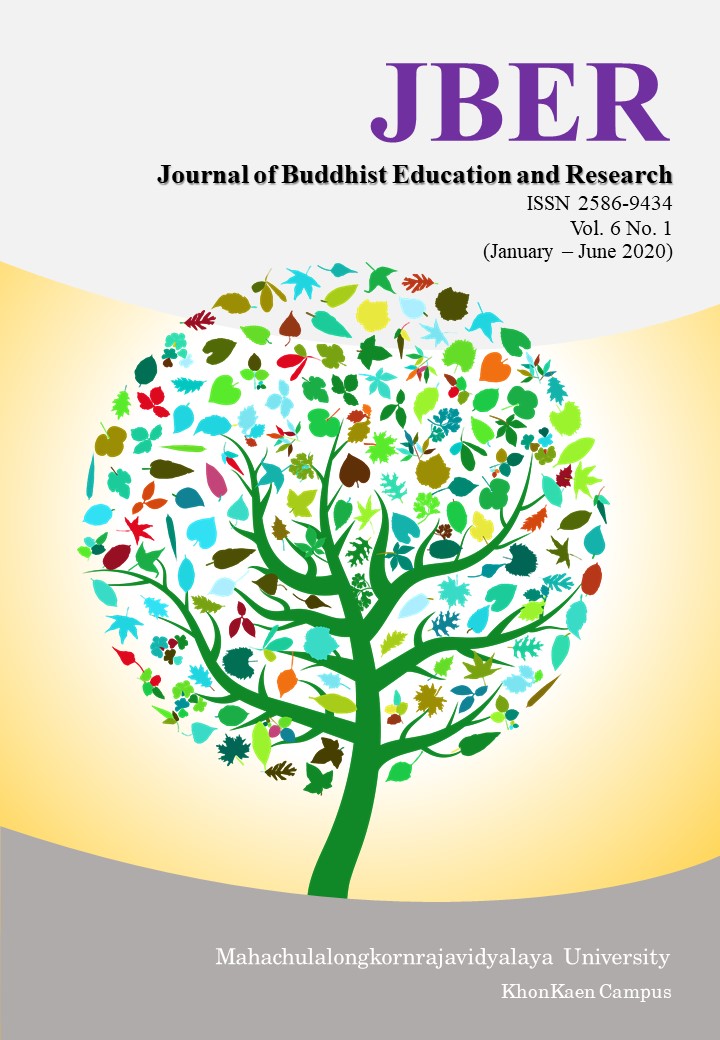THE OPINIONS OF THAI EMPLOYERS ABOUT THE ASEAN FREE LABOR MOVEMENT IN THAILAND
Keywords:
Opinion, ASEAN Free Labor Movement Policy, Professional Skill, Employers, ImpactAbstract
This thesis therefore began to fill this research gap by studying the opinions of Thai employers, who directly impacted by the MRAs, on the free labor movement of skilled labors from ASEAN member countries. The research objectives were (1) to study the policy on ASEAN skilled labor movement in Thailand,(2) to investigate the economic and social impacts of policy on free ASEAN labor movement on the industries in Thailand, and (3) to suggest areas of improvement and recommendation for further development of the free labor movement policy in Thailand. This thesis employed a qualitative research method using data from in-depth interviews.
The study found that, according to the Thai employees, the free movement of skilled ASEAN labors demonstrated positive impacts on the Thai industries. On the economic front, it reinforced economic growth, solved labor shortage problem, and generated positive competition between skilled Thai and ASEAN labors while maintaining equal wage and welfare. Moreover, on the social side, the free labor movement promoted cultural pluralism via cultural exchanges and respecting ethnic diversity among skilled Thai and ASEAN labors working in Thailand. However, the research findings suggested the urgent need to improve English language proficiency of the Thai labors in order to increase their communication skills, which will enable them to better compete with the foreign labors.
References
กระทรวงแรงงาน. (2557). โครงการเตรียมการรองรับการเคลื่อนย้ายของแรงงานสู่การเป็นประชาคมอาเซียน: ประชาคมอาเซียน (ASEAN Community: AC). ค้นเมื่อ10 ธันวาคม 2562, จากhttp://www.mol.go.th/sites/default/files/pdf /7. bththii_3_prachaakhmaaechiiyn.pdf.
ธนะพงษ์ โพธิปิติ. (2553). จำนวนแรงงานต่างด้าวไร้ฝีมือจากประเทศพม่า ลาว และกัมพูชา ในอนาคต และความต้องการแรงงานต่างด้าวไร้ฝีมือสำหรับภาวะสังคมผู้สูงอายุ. ค้นเมื่อ 15 พฤษภาคม 2562, จาก http://prp.trf.or.th/trf-policy-brief/.
มาลินี คงรื่น. (2558). แรงงานไทยปรับตัวอย่างไร เมื่อเข้าสู่ AEC. ค้นเมื่อ 10 มกร คม 2562.จาก https://www.parliament.go.th/ewtadmin/ewt/ parliament tparcy/download/ article/article_20151130092334.pdf.
ยไมพร คงเรือง. (2558). แรงงานอาเซียนหลากทักษะ-ฝีมือ แบบไหนที่ธุรกิจต้องการตัว. ค้นเมื่อ 28 ธันวาคม 2561, จาก https://news.thaipbs.or.th/content/2771.
สภาทนายความคณะอนุกรรมการสิทธิมนุษยชนด้าน คณะอนุกรรมการสิทธิมนุษยชนด้านชนชาติผู้ไร้สัญชาติแรงงานข้ามชาติและผู้พลัดถิ่น. (2554). สถานการณ์การย้ายถิ่นในประเทศไทย: สภาพปัญหา ผลกระทบแนวโน้ม. ค้นเมื่อ 6 มกราคม 2562, จาก http://www.Statelessperson.com/www/?q=taxonomy./term/18.
สภาธุรกิจสหรัฐอเมริกา – อาเซียน. (2561). จำนวนประชากรปัจจุบันของ 10 ประเทศในกลุ่มอาเซียน. ค้นเมื่อ 7 มกราคม2562, จาก https://www.wegointer.com /2018 /07 /total- asean-populations/
สุนิสา แพรภัทรประสิทธิ์. (2556). ผลกระทบด้านความมั่นคงทางเศรษฐกิจจากการจ้างแรงงานมีฝีมือตามข้อตกลงการเคลื่อนย้ายแรงงานเสรีภายใต้ประชาคมเศรษฐกิจอาเซียน: กรณีแพทย์ และพยาบาล. กรุงเทพฯ: สำนักพิมพ์ จุฬาลงกรณ์มหาวิทยา ลัย.
อดิศักดิ์ มหาวรรณ. (2557, 14 สิงหาคม). อาชีพเสรีในอาเซียน. ค้นเมื่อ 12 ธันวาคม 2561. จาก http://www.aecnews.co.th/.
อนุสรณ์ ธรรมใจ. (2555). AEC คือโอกาส เชื่อหากมีประชาธิปไตยแท้จริง – อีก 15 ปี ไทยเป็นประเทศพัฒนา. ค้นเมื่อ 11 ธันวาคม 2561. จาก https://voicelabour.org/อนุสรณ์-ธรรมใจชี้-aec-คือโอ/.





